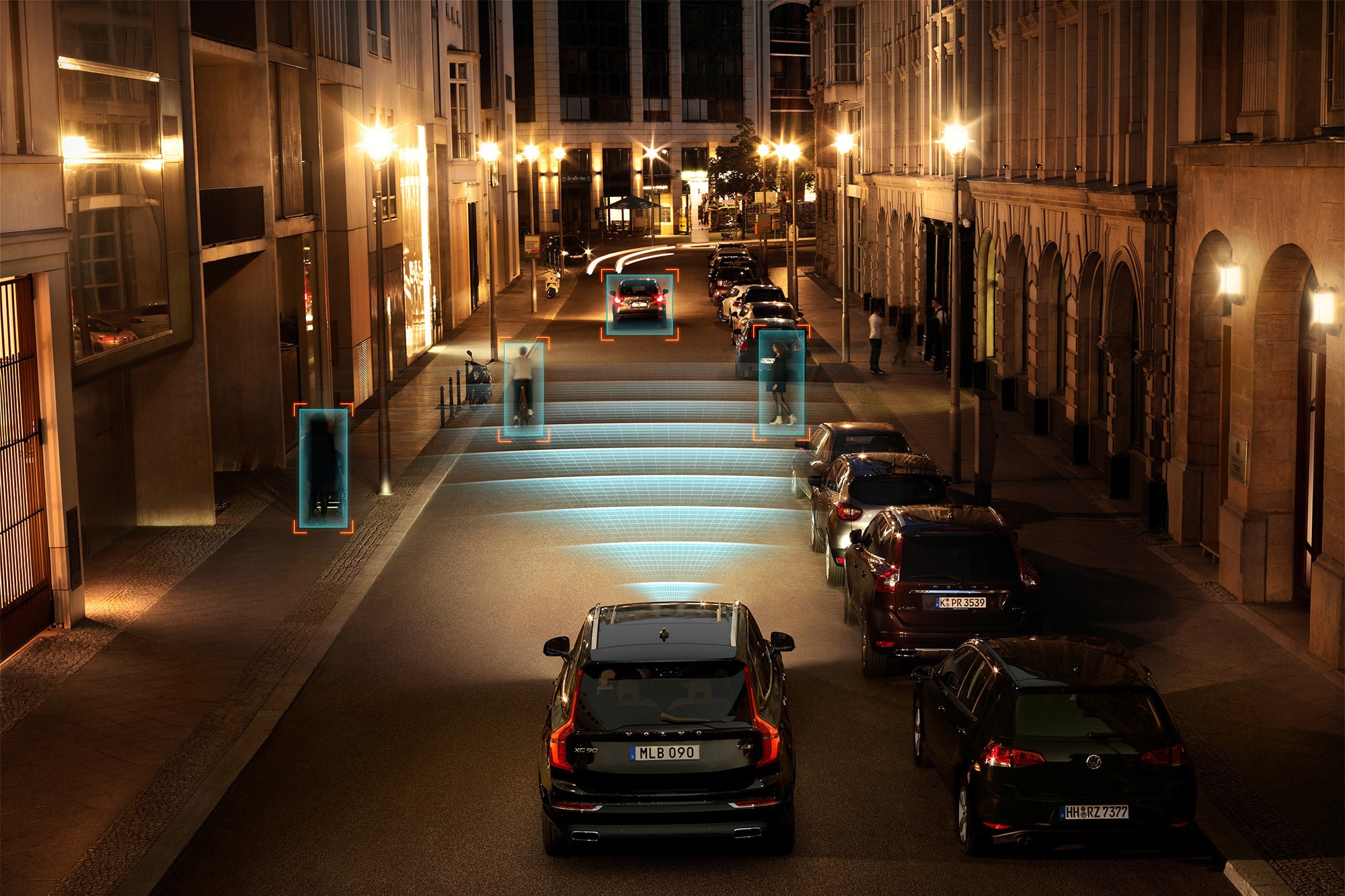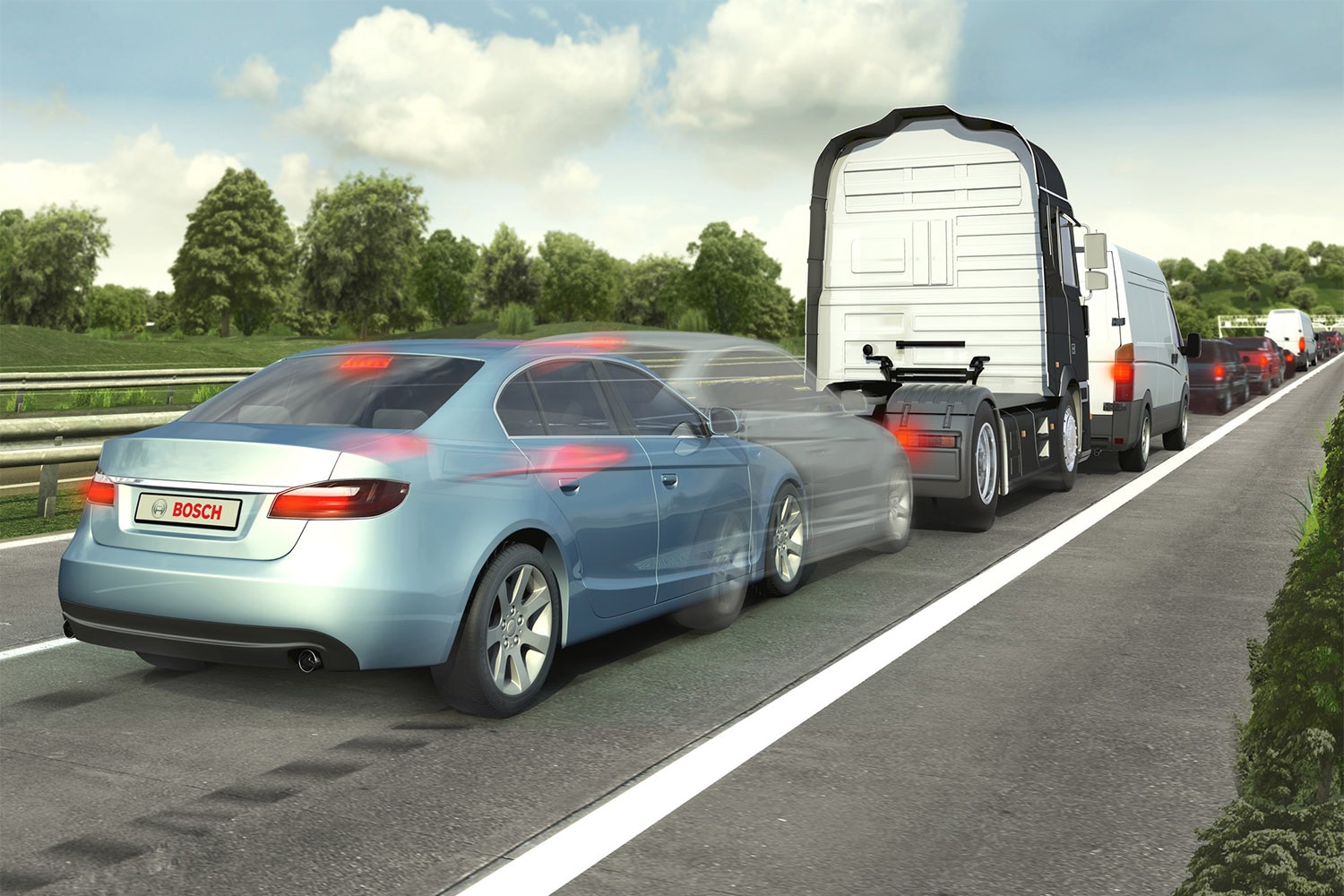Modern Safety Technologies and You: Emergency Braking Systems
Not all safety features are created equal: here's what you need to know.
 Volvo
Volvo
Article QuickTakes:
From the first rear-view mirror in 1911, to the introduction of 3-point seatbelts in 1959, and the widespread adoption of airbags and antilock brakes in the 1980s and 1990s, car safety improved gradually over most of the 20th century. Today, though, new safety technologies are rolling into production at an amazing rate.
It can be hard for the casual observer to keep up with the industry’s latest and greatest safety features. Considering many of them are still only available as extra-cost options, figuring out which are worth paying for is an important undertaking. Examining some of the pros and cons, and understanding how each new safety feature works, can go a long way in helping decide if they’re right for you.
Forward Collision Warning
 Aaron Miller
Aaron Miller
What is it?
Forward collision warning systems are akin to an extra set of eyes scanning the road ahead with superhuman concentration. They work by using a sensor in the front of the vehicle to detect the distance to a vehicle or object in front of you, then calculating the rate at which you’re closing in on it. Exceed a certain threshold, and the car’s computer realizes you’re at an elevated risk for a collision. At that point, either an audible, visual, or physical warning will go off, alerting you to the danger.
What are the pros?
When the systems work as intended, pre-collision warning systems can help you reduce the severity of a crash, or even prevent it entirely.
What are the cons?
The systems’ sensitivity varies between vehicles, and can startle and annoy some drivers who are otherwise paying attention to the road.
What should you look for?
Some of the more advanced systems on the market today can recognize pedestrians or even animals that may suddenly jump into the road in front of you, as illustrated above by Volvo’s pedestrian and cyclist detection system (shown at top). Also look for a braking assist feature, which primes the brakes so that as soon as you take action with your foot on the pedal, full braking force can be applied. It’s not the same as automatic braking (see below), but it can still shave feet off of your stopping distance, which could make all the difference in the world.
How much does it cost?
On an increasing number of vehicles, this is now standard equipment. On many, it’s either included when you upgrade your trim level or available as part of a safety equipment group – and rarely a la carte. As a result, the price varies by manufacturer and can range from zero to several thousand dollars. For example, on the 2018 Chevrolet Silverado 1500*, Forward Collision Alert is included in the Enhanced Driver Alert Package, MSRP $945. However, that package isn’t available on Silverado’s entry-level trims and configurations levels, meaning that in order to buy a Silverado with Forward Collision Alert, the MSRP climbs to over $50,000. Granted, you get a lot more than just the one option for that kind of outlay, but it’s hardly a sub-$30,000 budget truck, either.
*Amounts based on MSRP as of April 2018. Prices are subject to change.
Automatic Braking System
 Bosch
Bosch
What is it?
An automatic emergency braking system is an emergency feature that takes things a step further than simply alerting you to impending danger. It’s similar to a forward collision warning system, but it can physically apply the brakes if you fail to do so.
The fact that it can decide on its own to hit the brakes is actually a big deal, since it means you’re giving the vehicle the autonomy to decide when a panic stop is necessary. That’s why these systems are sometimes referred to as autonomous braking systems. They’re now available in many vehicles, though they require an extra-cost package in most cases.
What are the pros?
Even the most attentive drivers are prone to the occasional distraction or lapse in concentration. Your car isn’t. It’s a machine. So think of automatic braking like an insurance policy against your own mistakes. Hopefully, you’ll never need it, but if you do even once, it pays for itself by reducing or eliminating crash damage.
What are the cons?
There are so many different names for automatic emergency braking that it can be hard to tell which car has what. Systems on some vehicles can activate at any speed, but some only have low-speed emergency braking, which would rarely activate beyond a residential environment or stop and go traffic.
What should you look for?
When you’re evaluating a car’s safety rating, pay attention to how well the automatic braking actually works, not just whether it’s equipped. The Insurance Institute of Highway Safety (IIHS) began
How much does it cost?
It’s typically packaged with other safety features, which makes finding a specific price difficult. But it won’t be too long until it’s standard. A group of 20 major automakers, including Honda, Hyundai, Toyota and Volvo, have
NEW SAFETY FEATURES: DO YOU REALLY NEED THEM?
Even without electronic warnings like these,
Whether that adds up to make forward collision mitigation worth your hard-earned cash is entirely up to you, but it’s something that deserves serious consideration.



